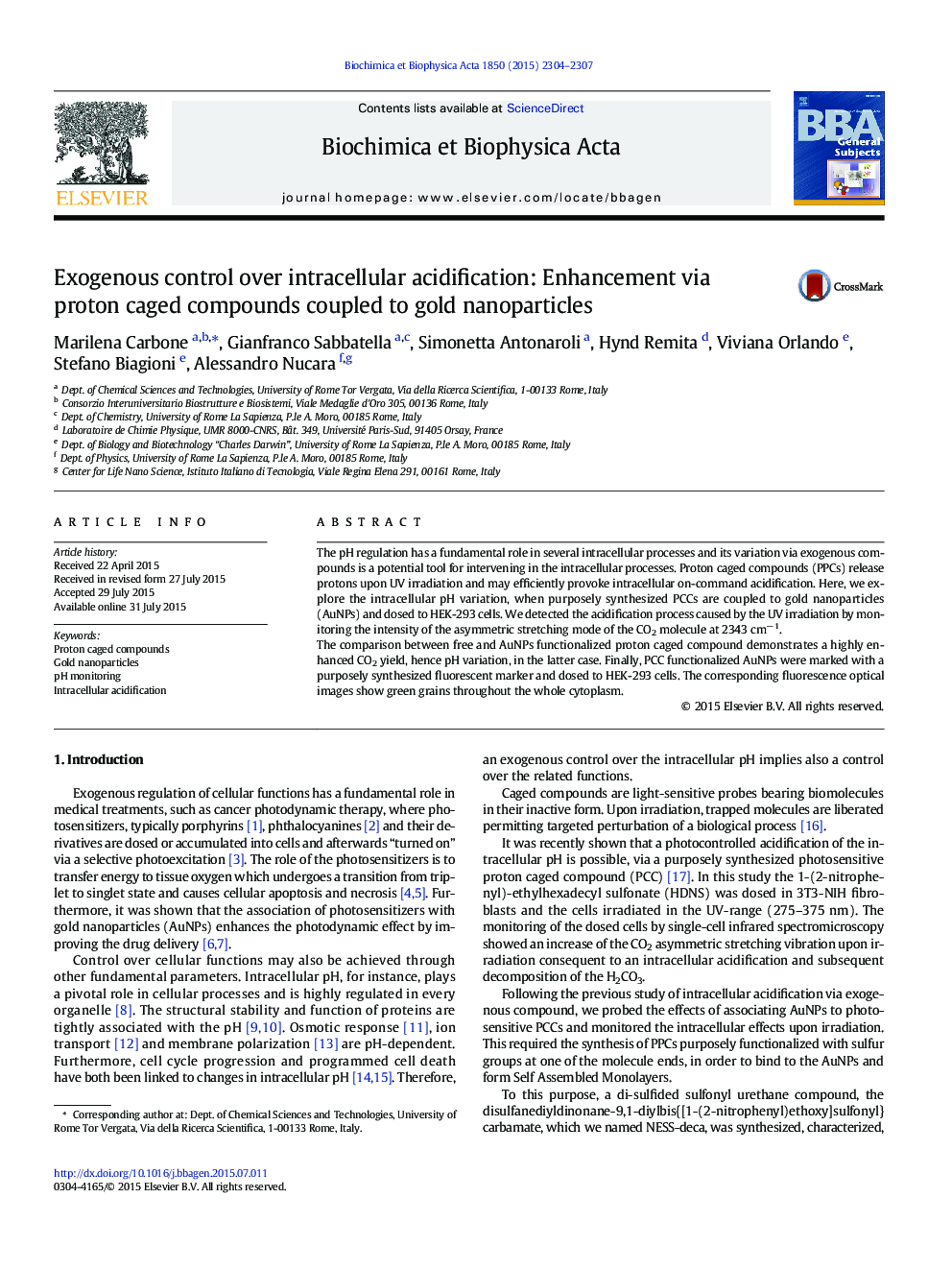| Article ID | Journal | Published Year | Pages | File Type |
|---|---|---|---|---|
| 1947401 | Biochimica et Biophysica Acta (BBA) - General Subjects | 2015 | 4 Pages |
•Proton caged compounds can be used for intracellular acidification.•The acidification effect is largely enhanced by gold coupled nanoparticles.•Fluorescence images of marked compounds show a distribution in the intracellular cytoplasm.
The pH regulation has a fundamental role in several intracellular processes and its variation via exogenous compounds is a potential tool for intervening in the intracellular processes. Proton caged compounds (PPCs) release protons upon UV irradiation and may efficiently provoke intracellular on-command acidification. Here, we explore the intracellular pH variation, when purposely synthesized PCCs are coupled to gold nanoparticles (AuNPs) and dosed to HEK-293 cells. We detected the acidification process caused by the UV irradiation by monitoring the intensity of the asymmetric stretching mode of the CO2 molecule at 2343 cm− 1.The comparison between free and AuNPs functionalized proton caged compound demonstrates a highly enhanced CO2 yield, hence pH variation, in the latter case. Finally, PCC functionalized AuNPs were marked with a purposely synthesized fluorescent marker and dosed to HEK-293 cells. The corresponding fluorescence optical images show green grains throughout the whole cytoplasm.
Graphical abstractFigure optionsDownload full-size imageDownload high-quality image (240 K)Download as PowerPoint slide
